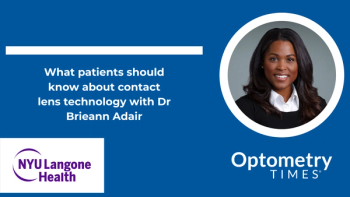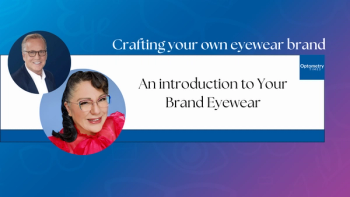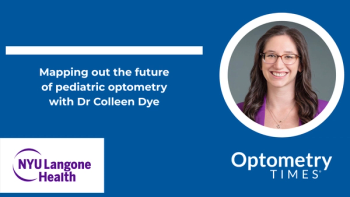
CIME 2025: What you missed in presbyopia tips, tricks, and updates
Neda Shamie, MD; Selina McGee, OD, FAAO, Dipl ABO; and Jacob Lang, OD, FAAO, provided their insights during CIME 2025 on May 4.
A plethora of topics were discussed from a collaborative care perspective at this year's annual Controversies in Modern Eye Care (CIME) conference in Los Angeles, California. From lenses to eye drops, presbyopia was a particularly hot topic on May 4. Neda Shamie, MD; Selina McGee, OD, FAAO, Dipl ABO; and Jacob Lang, OD, FAAO, detail key takeaways on presbyopia from CIME 2025.
Neda Shamie, MD:
Pharmacological presbyopia treatment is definitely something that we've been thinking about for a long time. It is a kind of a holy grail of eye care. Everyone over the age of 45 develops presbyopia, so to have a solution to bridge those patients until they develop cataracts or significant symptomatic changes of their vision, it's really important to think about solutions for our patients and eye drops. Presbyopia drops are a fantastic option for the right patient. It's ideal for that niche patient, the one who's between 45 and about 55 who is starting to have presbyopia.
An ideal patient would be an emmetrope who's really enjoyed excellent vision for a long time and is starting to have difficulty with their near vision. There's really no surgical grade option for them. Definitely, spectacles are great. Contact lenses with mono vision are great, but then drops offer an additive, or kind of a complementary option for these patients. What's exciting are all the improvements in the presbyopia drop kind of options that we have available. Thus far, we have had the 1.25% pilocarpine, which has been great and some patients really respond nicely to it. But because of the higher concentration of the pilocarpine, there are [adverse] effects associated with it.
So now recently, there was a new eye drop the pilocarpine 0.4% that has been FDA approved and available to us. Really exciting, lower concentration of pilocarpine, less [adverse] effect profile and yet equal response. The vehicle of this drop is soothing to the ocular surface. And really it's 2-in-1 in a sense. And many of these patients really have ocular surface disease that contributes to their visual problems. And so the new 0.4% pilocarpine offers ocular surface soothing effect with a vehicle together with a lower dose of pilocarpine.
Selina McGee, OD, FAAO, Dipl ABO:
Presbyopia is one of those really frustrating conditions for patients, and they don't understand all their options. They don't even understand that they can have multiple options. And I think that's the biggest key, is we want to prescribe for specific situations, and that might be a pair of spectacles and a therapeutic drop, it might be contact lenses and spectacles and a therapeutic drop, it might be a surgical option and a therapeutic drop. So I think we have to get out of this mindset. And our patients certainly don't understand this, that there's more than one option, and they're allowed to have more than one option, and so I think it's just really important that we give patients all of the available therapies and all the available technologies we have great candidates for therapeutic interventions with presbyopia are patients that are motivated.
Ultimately, it's not finding the right exact prescription or the right exact pupil size. It's more about is the patient motivated to try something different and be less dependent on their current technology. When you are examining your patient and you're talking about pharmaceutical options for presbyopia, you're going to do everything that you already do. It's going to make sure that the patient is a good candidate for the prescription therapy, and that means looking at their retina, whether it's a wild field photo or it's a dilated eye exam, as long as you can look and make sure they don't have any retinal pathology or anything else that would preclude them from being able to use it. It's the things that you and I already do. So just make sure that patient's had a comprehensive eye exam and then move forward with your therapies from there.
Jacob Lang, OD, FAAO:
What excites me most about pharmacological correction for presbyopia is really a new option. The flexibility that pharmacological options give our patients to use it when they need it, and be able to give them some freedom, flexibility and lifestyle options for their busy lives and busy careers through these busy presbyopic years is really what excites me most.
Some of the barriers that patients run into with regard to pharmacologic correction and presbyopia, I think one of the biggest ones is their providers. [It] is actually the doctors not knowing what options are out there with regards to pharmacologic correction and how those pharmacologic options might benefit their patients in their chairs. So furthering their education, embracing new things. I think that's the biggest thing and the biggest barrier to patients getting access to these options. When we're thinking about our patients and taking care of our patients, if we're prescribing any sort of treatment option, we want to do the best for our patients first, right? Do no harm. So we've got to take care of our patients from tee to green, from ocular surface to retina, optic nerve, we've got to take care of the entire patient. And that's why it's so important that we're the doctor, that this is really, you know, we're talking about presbyopia correction with pharmaceuticals. This is an eye drop in an eye drug. And so eye doctors need to take the role there and be the doctor. Take care of the entirety of the globe, the entirety of their ocular health from front to back.
Newsletter
Want more insights like this? Subscribe to Optometry Times and get clinical pearls and practice tips delivered straight to your inbox.



















































.png)


